- Facebook Group
- Facebook Page
- e-SLM vesion2


RPMS-PPST Resources Downloads
- Anecdotal Record, Learner’s Needs, Progress and Achievement Cardex
- Call Parent and Home Visit Forms
- e-IPCRF Official Copy
- Electronic Self-Assessment Tool (e-SAT)
- Individual Plan for Professional Development (IPPD)
- IPCRF-DEVELOPMENT PLAN
- Mid-year Review Form (MRF)
- National Orientation Materials for RPMS Multi-Year RPMS-PPST and Use of Electronic IPCRF for Teachers
- Performance Monitoring and Coaching Form
- Reflections, Journal Entry on Learner-Centered Teaching Philosophy
- RPMS Guidelines
- RPMS Portfolio with MOVs
- RPMS Tools and Forms
Most Downloaded
- Daily Time Record (eDTR)
- Electronic Class Record
- Enhanced BEEF
- Enrollment Form 2022-2023
- Learning Activity Sheets
- New Sick Leave Form 6
- Self-Learning Modules (SLM)
- Teachers Guide 2021-22
- Your 700+ PowerPoint Templates
Reflection of a learner-centered teaching philosophy
Reflection journal entry in drrr: applying a learner-centered teaching philosophy - download here reflection journal entry in esp: applying a learner-centered teaching philosophy - download here reflection journal entry in media and information literacy: applying a learner-centered teaching philosophy - download here reflection journal entry in ucsp: applying a learner-centered teaching philosophy - download here journal entry of technology and livelihood education (tle) teacher: application of learner-centered teaching philosophy - read/download journal entry of elementary filipino teacher: application of learner-centered teaching philosophy - read/download journal entry of high school filipino teacher: application of learner-centered teaching philosophy - read/download (adsbygoogle = window.adsbygoogle || []).push({}); journal entry of elementary english teacher: application of learner-centered teaching philosophy - read/download journal entry of high school english teacher: application of learner-centered teaching philosophy - read/download journal entry of elementary science teacher: application of learner-centered teaching philosophy - read/download journal entry of high school science teacher: application of learner-centered teaching philosophy - read/download journal entry of elementary mathematics teacher: application of learner-centered teaching philosophy - read/download journal entry of high school mathematics teacher: application of learner-centered teaching philosophy - read/download journal entry of elementary mapeh teacher: application of learner-centered teaching philosophy - read/download journal entry of high school mapeh teacher: application of learner-centered teaching philosophy - read/download journal entry of elementary araling panlipunan teacher: application of learner-centered teaching philosophy - read/download journal entry of high school araling panlipunan: application of learner-centered teaching philosophy - read/download.

No comments
Post a Comment
Social Counter
- facebook count=667 K Follow
Featured Post
Catch-up fridays reading materials free download.
Catch-up Fridays Reading Materials Free Download exclusive for members Are you looking for an enriching reading experience for learners of a...

Popular Posts
- Updated list of schools with suspended face-to-face classes
- Face-to-Face classes to resume April 17
- Specific Guidelines for the Effective Implementation of the National Learning Camp and Other Activities for the 2024 End-of-School-Year (EOSY) Break
._salary_.png)
- Rationalization of Teachers' Workload in Public Schools and Payment of Teaching Overload.
DOWNLOADABLE RESOURCES
- Budget of Work
- Curriculum Guide
- Detailed Lesson Plan
- enhanced enrollment form
- Enhanced TIP Course Books
- learning activity sheet
- Modules with answer key
- Quarterly Assessment
- Reading Materials
- Remedial Reading
- Rubric Assessment Tools
- school calendar 2021-2022
- school calendar 2022-2023
- Self-Learning Modules
- Summative Test
LATEST ISSUANCES
Deped updates, teacher resources.
Academic Resources
- Academic Calendar
- Academic Catalog
- Academic Success
- BlueM@il (Email)
- Campus Connect
- DePaul Central
- Desire2Learn (D2L)
Campus Resources
- Campus Security
- Campus Maps
University Resources
- Technology Help Desk
Information For
- Alumni & Friends
- Current Students
- Faculty & Staff
- Teaching Guides
- How Students Learn
- Course Design
- Instructional Methods
- Assignment Design
- Feedback & Grading
- Learning Activities
- Flex Teaching
- Online Teaching
- Scholarship of Teaching and Learning
- Teaching Effectiveness
- Teaching Observations
- Teaching Philosophies
- Teaching Portfolios
- Inclusive Teaching
- Teaching at DePaul
- Support Services
- Technology Tools
Teaching Commons > Teaching Guides > Reflective Practice > Teaching Philosophies
The Teaching Philosophy
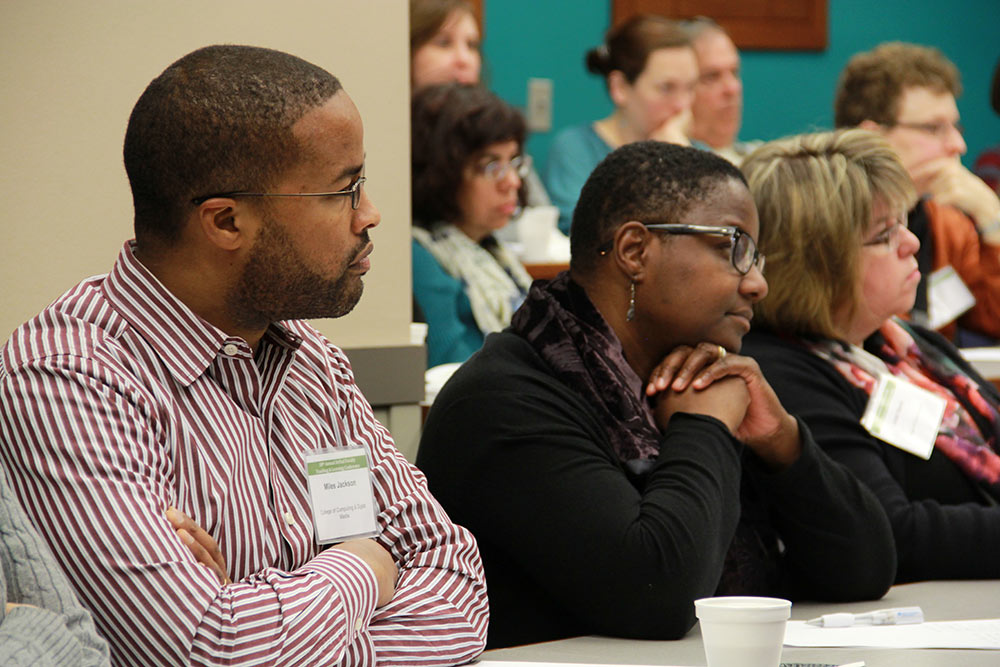
Teaching philosophies are frequently required for job applications and for tenure or promotion packets. They also serve as a central reflective document in teaching portfolios.
Depending on your audience and purpose, the length of your philosophy will vary. While most teaching philosophies are one to two pages, tenure applicants may be asked to expand their statement to five to eight pages.
General Guidelines
Offer concrete examples . Illustrate how you enact your beliefs about how people learn and what the role of a teacher is in promoting learning in the classroom by pointing to specific assignments, activities, and experiences.
Daniel Makagon (College of Communication) shows how an assignment he designed promotes dialogic learning:
"For example, an Intercultural Context assignment in Intercultural Communication exemplifies my desire to have students participate in a larger dialogue and debate about core issues raised in the class. This assignment asks students to present artifacts that highlight some aspect of historical or contemporary intercultural communication. A small sample of their presentations shows a range of issues that, taken together, reflect the diverse and complex matrix of intercultural communication: a video clip from a news broadcast about racist gangs in prisons and how racial tensions will affect prisoners when they are released, a song that used rap music to put forth Christian messages, an advertisement that presented intercultural relations as contexts for consumption [...] In short, the students were able to share a variety of artifacts that addressed issues big and small, exemplifying and extending the intercultural communication theories about race, gender, religion, and globalization (among others) that we analyzed in course materials.”
Make connections to your discipline . Define what it means to be teacher within your area(s) of expertise. As you write, remember that you are not only making a claim about issues related to teaching and learning, you are also supporting your point of view with personal experience and, if possible, outside scholarship. Show how your teaching, research, and professional activities inform one another. Draw specific connections between these areas in your teaching philosophy.
Anna Kathryn Grau (School of Music) makes a case for the importance of music in the humanities and in liberal arts education more generally:
“Liberal arts education works to make students aware of other points of view, of otherness, both historical and contemporary. The study of music deserves a place in this context, alongside the other humanities. I believe musicology has a crucial, though often overlooked, place in expanding our understanding of how our culture evolved. In the study of music history, we demonstrate to students the historical and cultural contingencies of things often perceived as universal and transcendent. General liberal arts students benefit from incorporating thought about music and its history into their general course of study, while musicians can enrich their own experience and professionalism through better understanding not only of the technical elements of their material, but of its social and cultural role throughout history. For this reason, I am particularly interested in the opportunity to teach music in an interdisciplinary context. Especially in general curriculum courses, the engagement of students with music and listening skills often correlates closely with their ability to see music as part of a larger social-historical picture. "
Make it personal . Avoid making generalizations about all teachers and learners. The more specific your philosophy is to you and your practices, the more valid and compelling it will be because you are not asking your reader to agree to universal claims based on your anecdotal experiences.
Trent Engbers (School of Public Service) explains why grappling with ethical questions is central to his pedagogical goal of encouraging students to consider new ways of thinking:
“My favorite application activities are embedded with ethical questions about the world of public managers and elected officials. The controversial nature of ethical questions engages students in debate with each other and students find that despite their knowledge of 'truth' there is always someone who sees it differently. Following application, I set the context for the next lesson so that ideas build on each other and lead to higher levels of expertise.”
Getting Started
Here are some questions to consider in your teaching philosophy:
- What attitudes do you feel you must hold (or avoid) to be a successful teacher? How have these attitudes impacted your teaching?
- What are your beliefs about learning? How do you think people learn best? What has informed your beliefs about learning (scholarship, experience, teaching mentors)? How are your beliefs about learning reflected in your teaching?
- What do you hope to accomplish when you teach? What are your learning goals for any given course? Are there some learning goals that exist in virtually all of your courses? Do you change learning goals depending on whether or not the course is for majors or non-majors, undergraduates, or graduate students?
- How do you assess what students need most from you as a teacher? How do you assess if students have fulfilled the course goals?
- Give an example of a particularly successful assignment, unit, or course. What made it successful? How does your example represent your beliefs and values about teaching and learning?
- Give an example of an assignment, unit, or course that didn't work. Why wasn’t it successful? What changes did you make based on that experience to turn it into a successful assignment, unit, or course?
- What type of feedback do you get from students? How has student feedback influenced your beliefs and practices about teaching?
More Examples
- Paul Booth , associate professor of Media and Cinema Studies in the College of Communication, sets out a clear framework, provides examples in support of that framework, and articulates how the learning spaces he creates lead to concrete outcomes for students.
- Edward Evins does double duty as both a First-Year Writing Instructor and a University Center for Writing-based Learning tutor. His tutoring philosophy exemplifies the best practices of a philosophy statement and has an engaging design connected to an overarching metaphor.
- Carolyn Martineau , Senior Instructor in Biological Sciences in the College of Science and Health, begins her philosophy with a clear list of key driving elements, and then she supports her mission statement with connected examples.
Classroom Q&A
With larry ferlazzo.
In this EdWeek blog, an experiment in knowledge-gathering, Ferlazzo will address readers’ questions on classroom management, ELL instruction, lesson planning, and other issues facing teachers. Send your questions to [email protected]. Read more from this blog.
The Importance of ‘Learner-Centered’ Professional Development

- Share article
(This is the second post in a three-part series. You can see Part One here .)
The new question of the week is:
What is the best professional-development session you ever participated in, and what made it so good?
Nancy Frey, Ph.D., Douglas Fisher, Ph.D., Justin Lopez-Cardoze, and Marina Rodriguez kicked off this series .
Today, Pat Brown, Mary K. Tedrow, Jeremy Hyler, and Altagracia H. Delgado share their experiences.
‘Knowledge Is Not Passively Received’
Pat Brown is the executive director of STEM for the Fort Zumwalt school district in Missouri and the author of NSTA’s bestselling book series Instructional Sequence Matters:
Effective professional development relates to the cognitive science research on what we know about the best possible learning environments. The books How People Learn (Bransford, Brown, and Cocking, 2000) and How People Learn II: Learners, Contexts, and Cultures (National Academies of Sciences, Engineering, and Medicine, 2018) describe three interrelated factors that are essential for ensuring high-quality learning: learner-, knowledge-, and assessment-centeredness.
Learner-Centered
Fundamental to the idea of learner-centeredness is the idea that all knowledge is constructed through active experience. This means that knowledge is not passively received.
The learner-centered principle is rooted in a long-held constructivist idea that acknowledges people learn best when they actively construct knowledge that builds on prior understanding based on firsthand experiences with data and evidence. Long-lasting understanding is promoted when learners construct knowledge, connect details within a broader framework for understanding, and relate information with the knowledge they already have.
The ideas educators construct serves as the framework from which they try to advance their understanding. How educators think about their ideas, monitor, and reflect on their developing understanding is critical for regulating and being more self-reliant. Thus, professional development is most impactful if it allows educators to play an active role in learning. Passive professional-development experiences do not tap into the most potent, constructivist learning needed to develop deeper conceptual understanding from professional-development experiences.
Knowledge-Centered
If we all try to fit new experiences with prior knowledge, as learners, it follows that we learn most readily if the targeted ideas fit in a broader framework for what we should know and be able to do as educators. Knowledge-centered professional development focuses on the types of ideas, practices, and skills educators need to succeed. Knowledge-centered professional development homes in on the most crucial ideas and helps educators organize and optimize learning for educators. We have difficulty implementing overly challenging or multiple unrelated plans. Thus, focused knowledge development is vital to realize the full benefits of professional-development experiences.
Assessment-Centered
Finally, effective professional development is assessment-centered. As educators, we need high standards for learning and frequent feedback so we know we are developing skills necessary for success. Having means to assess our knowledge development is a way to evaluate our growth in knowledge (metacognition) and the effectiveness of our professional development on programmatic changes and student learning.
The Learning Culture
The principles underlying How People Learn and How People Learn II do not operate in isolation but are overlapping and deeply entrenched in one another to form the learning culture of the classroom. While I have described them as separate entities, the best learning environments operate at the nexus of the principles associated with learner-, assessment-, and knowledge-centered domains.
For example, the feedback advocated by assessment-centered learning directly influences individuals and their abilities to reflect on their developing understanding. In addition, the knowledge and standards used to design instruction directly impact the activities used to help people construct knowledge.
Finally, the goals chosen to guide instruction should closely align with the evaluations used to assess student understanding. The ideas behind How People Learn and How People Learn II show that a holistic approach is necessary to accommodate the intricacies of learning. The overlap of these three dimensions can create a positive school culture and climate that focuses on professional growth and uses best practices for adult learners.

Teachers Seen as ‘Knowledge Creators’
Mary K. Tedrow taught in the high school English classroom beginning in 1978, ending her K-12 career as the Porterfield Endowed English Chair at John Handley High School in 2016. She currently directs the Shenandoah Valley Writing Project at Shenandoah University in Winchester Va. Tedrow is also a lecturer at Johns Hopkins University and is the author of Write, Think, Learn: Tapping the Power of Daily Student Writing Across Content Areas :
The hands-down, not-even-a-close-second professional development of my four-decade-spanning teaching career was the Invitational Summer Institute of the National Writing Project held on the campus of George Mason University in 1998 under the direction of the Northern Virginia Writing Project.
I am not the first, nor hopefully the last, teacher to identify the social practices of the NWP as the transformative milestone in my teaching practice.
What makes it so good?
First, teachers are welcomed as knowledge creators rather than knowledge receivers. Each fellow reflects on and reads about one of their own successful teaching practices and presents a lesson to the fellowship. The premise of the writing project is that teachers already have expertise in delivering instruction worth sharing. A trusting community is formed where that expertise is shared. From the very first day, we were treated with professional respect. Our group spanned K-university. Seeing language development across these grade levels made the experience surprisingly rich.
Secondly, we spent time working as writers. We were immersed in the writing process from invention through revision and finally to publication. The NWP believes we all need to be writers (students and teachers) and the best way to develop a writing process is to experience one.
Finally, we learned by doing. All presentations were demonstration lessons where the teacher/participants experienced the strategies and moves by the teacher presenter. This is far different from sit-and-get presentations. We experienced quickwrites, small-group collaboration, draft writing and revising, writing to learn, and more from a student perspective. We reflected regularly on how these practices could be adapted for use in our classrooms. Regular reflection became a professional habit.
The changes following the summer were immediate and ongoing. After feeling the confidence born of living up to expectations, I strove to create that climate for students. We wrote frequently in low-pressure situations long before students were asked for high-stakes writing. We shared our thoughts. I asked for student evaluations just as my leaders had included me in on the evaluation process. (What worked? What would you do differently?)
The NWP model works because teachers are treated the way we are often told to treat students but rarely experience ourselves in our working lives. The weeks spent in the summer changed my classroom into a place I did not want to leave and kept me in a continual search for solutions to my own classroom-based inquiries.

Learning How to Teach Writing
Jeremy Hyler is a middle school English and media-literacy teacher in Michigan. He has co-authored Create, Compose, Connect! Reading, Writing, and Learning with Digital Tools (Routledge/Eye on Education), From Texting to Teaching: Grammar Instruction in a Digital Age , as well as Ask, Explore, Write . Jeremy blogs at MiddleWeb and hosts his own podcast, Middle School Hallways. He can be found on Twitter @jeremybballer and at his website jeremyhyler40.com :
The best professional development I have ever been a part of was the summer institute for the Chippewa River Writing Project , a satellite site of the National Writing Project .
I attended the summer institute as my flame for teaching was almost burnt out. I really wasn’t sure how to reach students with their writing anymore. The professional development was a four-week intense writing institute where I learned not only how to write as a teacher but how to teach good writing to my students. In addition, I also learned what it meant to give meaningful feedback to peers and students.
Throughout the institute, I watched teachers become vulnerable with their own writing. They also shared their own writing lessons they did in their classrooms to get constructive feedback on what was quality instructional practice and what could be improved. As an added bonus, we were all taught how to effectively add technology into our classroom. We learned about Google Documents and created beautiful digital stories throughout the institute, along with being introduced to other digital tools.
For me, it was the best professional development because it lit my teaching fire again. I had renewed passion for what I wanted to do with my students. It was organized in a way that helped me build confidence in my own writing, so I could share it with my students and help them with the struggles they may have in being confident writers. Furthermore, I learned there are a network of teachers out there beyond the walls of my own school who are willing to help and be supportive when it comes to teaching. My writing-project peers are the best!
The support and the network of educators I have been exposed to because I attended the summer institute have led me down a road of continuous opportunities. Ever since I have been a part of the Chippewa River Writing Project, I have co-authored three books, presented at many conferences both in my own state and nationally, and have had many leadership roles. Without the writing project, my voice would have never been heard.
It continues to be the best professional development even today because I have been a part of the summer institute leadership team and have also been a participant for two additional summers. Plus, I continue to work on the leadership team to bring the best professional-development opportunities to teachers across the nation. I would highly recommend without hesitation to anyone to attend the summer institute at their local writing project site and make their voice heard.
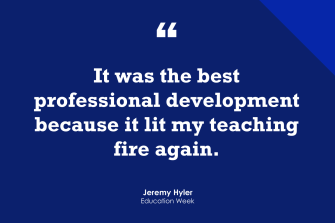
‘Research-Based Strategies’
Altagracia H. Delgado (Grace) has been in the education field for 27 years. In those years, she has worked as a bilingual teacher, literacy coach, and school and central-office administrator. Grace is currently the executive director of multilingual services for the Aldine ISD, in the Houston area:
A few years ago, I participated in the Center for Applied Linguistics’ Spanish Literacy Institute: Fostering Spanish Language and Literacy Development. In this training, we learned research-based strategies to provide effective language and literacy instruction in Spanish in transitional bilingual and dual-language education programs.
The sessions were interactive and provided engaging activities for teaching academic language and literacy in Spanish and English to students in elementary grades instructional programs where Spanish and English are the languages of instruction. The presenters taught us about classroom practices by framing the understanding of how Spanish and English linguistic features are the same and different, helping us see where connections can be facilitated, where languages connect, and where specific instruction needs to be given due to the differences.
This training was the best I have ever attended because it modeled for us what real bilingual and dual-language classrooms teachers need to do during their day. By providing the sessions in both English and Spanish and having a combination of research and interaction among adults, we were able to experience the daily interactions of multilingual students and their teachers. The information was practical and applicable in a classroom setting, but it also provided answers for the many questions bilingual educators encounter in their professions, specifically those addressing the similarities and differences in the languages and how to systematically teach language acquisition for Spanish-speaking students.
Although this professional-development session took place six years ago, I still lean back on the principles learned at that time, especially when working with teachers of emergent bilingual students. In the years after that training, I have had the opportunity to provide professional-development sessions to classroom teachers and school leaders and I have used many of the practices and research learned during this training to engage adults in their own learning. I have also been able to witness teachers’ classrooms where the learning and connections have happened, as they have been able to apply this knowledge and experiences with their multilingual students.

Thanks to Pat, Mary, Jeremy, and Altagracia for contributing their thoughts!
Consider contributing a question to be answered in a future post. You can send one to me at [email protected] . When you send it in, let me know if I can use your real name if it’s selected or if you’d prefer remaining anonymous and have a pseudonym in mind.
You can also contact me on Twitter at @Larryferlazzo .
Education Week has published a collection of posts from this blog, along with new material, in an e-book form. It’s titled Classroom Management Q&As: Expert Strategies for Teaching .
Just a reminder; you can subscribe and receive updates from this blog via email (The RSS feed for this blog, and for all Ed Week articles, has been changed by the new redesign—new ones are not yet available). And if you missed any of the highlights from the first 10 years of this blog, you can see a categorized list below.
- The 11 Most Popular Classroom Q&A Posts of the Year
- Race & Racism in Schools
- School Closures & the Coronavirus Crisis
- Classroom-Management Advice
- Best Ways to Begin the School Year
- Best Ways to End the School Year
- Student Motivation & Social-Emotional Learning
- Implementing the Common Core
- Challenging Normative Gender Culture in Education
- Teaching Social Studies
- Cooperative & Collaborative Learning
- Using Tech With Students
- Student Voices
- Parent Engagement in Schools
- Teaching English-Language Learners
- Reading Instruction
- Writing Instruction
- Education Policy Issues
- Differentiating Instruction
- Math Instruction
- Science Instruction
- Advice for New Teachers
- Author Interviews
- The Inclusive Classroom
- Learning & the Brain
- Administrator Leadership
- Teacher Leadership
- Relationships in Schools
- Professional Development
- Instructional Strategies
- Best of Classroom Q&A
- Professional Collaboration
- Classroom Organization
- Mistakes in Education
- Project-Based Learning
I am also creating a Twitter list including all contributors to this column .
The opinions expressed in Classroom Q&A With Larry Ferlazzo are strictly those of the author(s) and do not reflect the opinions or endorsement of Editorial Projects in Education, or any of its publications.
Sign Up for The Savvy Principal
Edweek top school jobs.

Sign Up & Sign In

Distance Learning
Putting learners in charge: learner-centered teaching.
by Jessica Mansbach
The first paragraph of your course syllabus states, “Welcome to the course! In this course, we will cover many topics.” The first paragraph of your colleagues’ syllabus states, “Welcome to the course! In this course, you will learn about many topics.” Do you notice the difference? It may be subtle, but the phrases “we will cover” versus “you will learn” suggest differences in students’ role in learning. We will cover suggests that students play a passive role in class, learning what you decide to cover or teach. You will learn suggests that students will play an active role in the class, taking responsibility for their learning.
Learner-Centered Teaching Strategies: Why They Matter
Learner-centered teaching strategies help you design and teach a course in which students take responsibility for their learning. When students are in charge of their learning, they generate questions about course content, ask questions about how to learn and study, interact with their peers to solve problems, and practice critical thinking. Students’ motivation tends to increase since they have some control over their learning, and their retention of course content also tends to increase since they are questioning what they are learning and how they are learning it (Weimer, 2011).
However, many instructors believe that as subject matter experts, they are responsible for deciding what students should learn and how they should learn it. Many instructors with this belief think that they need to teach students the right answers to questions, decide what content to teach, and deliver content as efficiently as possible. This instructor-centered approach, though, puts students in a passive role and does not give them the opportunity to ask many questions, make choices about what content to learn, or understand why they are learning what they are learning. As passive learners, students’ motivation tends to decrease and they have little reason to interact with their peers (Peery & Veneruso, 2012).
In her article Changing the Way We Teach: Making the Case for Learner-Centered Teaching, Maryellen Weimer (2011), a scholar in learner-centered teaching, explains that using learner-centered teaching strategies may require that instructors alter the way they think about teaching and the strategies they use to teach. In a subsequent article, Five Characteristics of Learner-Centered Teaching , Weimer (2012) provides examples of how to shift from instructor centered-teaching to learner-centered teaching.
Examples Of Learner-Centered Teaching
1. teach students to think for themselves.
Asking students to generate discussion questions or summarize the weekly discussion are two ways you can ask students to think about what they are learning and what it means and to assume responsibility for their learning. Prior to asking students to generate discussion questions or summarize the week’s content, it is important that you model how to do both of those activities so that students get a sense of what they are supposed to do and how to do it. Using learner-centered teaching strategies, then, does not mean that you abdicate your duties as an instructor, since you should still be modeling what you want students to do and taking the time to construct meaningful discussion questions and other course content that aligns with course learning outcomes (Weimer, 2012).
2. Teach students vital skills they need to learn
Weimer (2012) explains “Learner-centered teachers teach students how to think, solve problems, evaluate evidence, analyze arguments, generate hypotheses—all those learning skills essential to mastering material in the discipline” (para. 3). Students do not necessarily know how to demonstrate these skills, so designing activities that allow students to practice is important. For example, after sharing a few lecture outlines or demonstrating in a short video how to evaluate evidence, you can ask your students to create their own lecture outlines or evidence summaries (Weimer, 2012).
3. Teach students to reflect on how and what they are learning
A key premise of learner-centered teaching is that students need to know how to learn and how to evaluate whether they are learning. To help students develop the skill of reflection, include questions in assignments and activities that ask students about the process they went through to complete the task or about how they addressed any learning challenges (Weimer, 2012).
4. Allow students to make decisions about what content to learn
When students can make choices about what they want to learn, you enhance their motivation to engage with course content since they can pursue their own interests related to the content (Weimer, 2012). For example, you can assign students a research paper and allow them to select from a variety of topics. Or, you can allow students to submit an assignment as a paper or video.
5. Promote student-to-student interaction
Learner-centered teaching strategies emphasize student-to-student interaction since students will learn about course content and the learning process by seeing how their peers think. As the instructor, you help facilitate meaningful student-to-student interaction by teaching students how to collaborate (Weimer, 2012). For example, before you ask students to work in groups to demonstrate discussion content or summarize the week’s content, you can give them a few short articles to read about how to have a productive collaboration.
For more information on how to use learner-centered teaching strategies, peruse the resources below or talk with a Learning Designer.
Peery, T. & Veneruso, S. (2012). Balancing Act Managing Instructor Presence. Retrieved from http://www.facultyfocus.com/articles/online-education/balancing-act-managing-instructor-presence-and-workload-when-creating-an-interactive-community-of-learners/
Weimer, M. (2012). Five Characteristics of Learner Centered Teaching. Retrieved from http://www.facultyfocus.com/articles/effective-teaching-strategies/five-characteristics-of-learner-centered-teaching/
Weimer, M. (2011). Changing the Way We Teach: Making the Case for Learner Centered Teaching. Retrieved from http://www.facultyfocus.com/articles/teaching-professor-blog/changing-the-way-we-teach-making-the-case-for-learner-centered-teaching/
Bain, K. (2011). What the best college teachers do . Harvard University Press
Bart, M. (2010) The Benefits of Making The Shift To Student Centered Teaching. Retrieved from http://www.facultyfocus.com/articles/effective-teaching-strategies/the-benefits-of-making-the-shift-to-student-centered-teaching/
North Central Regional Educational Laboratory. (2000). Critical issue: Working toward student self-direction and personal efficacy as educational goals. Retrieved from http://www.ncrel.org/sdrs/areas/issues//learning/lr200.htm
McKeachie, W., & Svinicki, M. (2013). McKeachie’s teaching tips . Cengage Learning.
Weimer, M. (2002). Learner-centered teaching: Five key changes to practice . John Wiley & Sons.
Related Posts
Inclusive Language
Common Course Design Questions: See What Your Peers Think
Designing to Promote Instructor Presence and Instructor-Student Interaction
Scripts, Images, Action!: Creating Quality Videos for MUS 370
Leave a Reply Cancel reply
Your email address will not be published. Required fields are marked *
Save my name, email, and website in this browser for the next time I comment.
Professional e-portfolio to comply with requirements of transparency and university accreditation standards
Miguel Ángel Escotet
Scholarly Blog
My teaching philosophy: an intimate reflection.

- April 16, 2022
- Educational Philosophy , Essay , Ethics , Higher Education , Psychology , Social Philosophy
Education should prepare the human being for ongoing change and for the eventual crisis that might arise as a result of the transition.
I believe the aim of education should be to build in each student strong theoretical foundations, to help future teachers to be educated rather than trained, to be capable of understanding the complexities of the organic society — Gemeinschaft — rather than just the reduction of people to human material — Massenmensch . I have always been uncomfortable with labels, recipes, and linear models for preparing teachers at all levels. While I appreciate their need to develop and learn teaching methodologies, we must always remember the dependent relationship between theory and praxis; both should be interrelated. There is no applied scientific discipline if there is no discipline to apply. In teacher education programs we often emphasize the learning of methodologies, content information, and skills to the detriment of what constitutes the core of education which is learning to be . Very little learning is related to the dimensions which require an understanding of ourselves, of others, and of the world in which we live.
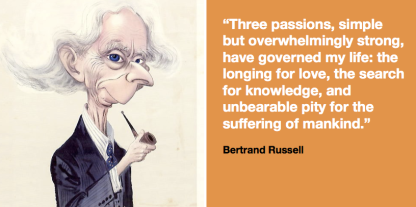
In addition to mastering knowledge, thinking critically, and being problem-solvers, teachers should learn tolerance, ethical behavior, aesthetic sensitivity, and moderation of superfluous elements. We must help future people to be free from prejudices, where learning to care, learning to share, learning to grasp the whole and act on the parts, learning to be, and learning to carry on learning should be some of the society’s main objectives. Such variables are my major concern. We must infuse these cognitive and affective dimensions into the core of all teacher education programs. Whether the future will be more humane than our past can be determined only by our future efforts. I try in my courses to educate for such a future by helping my students to develop knowledge and sensitivity about the complexity and the multiplicity of elements within the science of education and to understand their relationship to the “learning person” in constructive partnership.
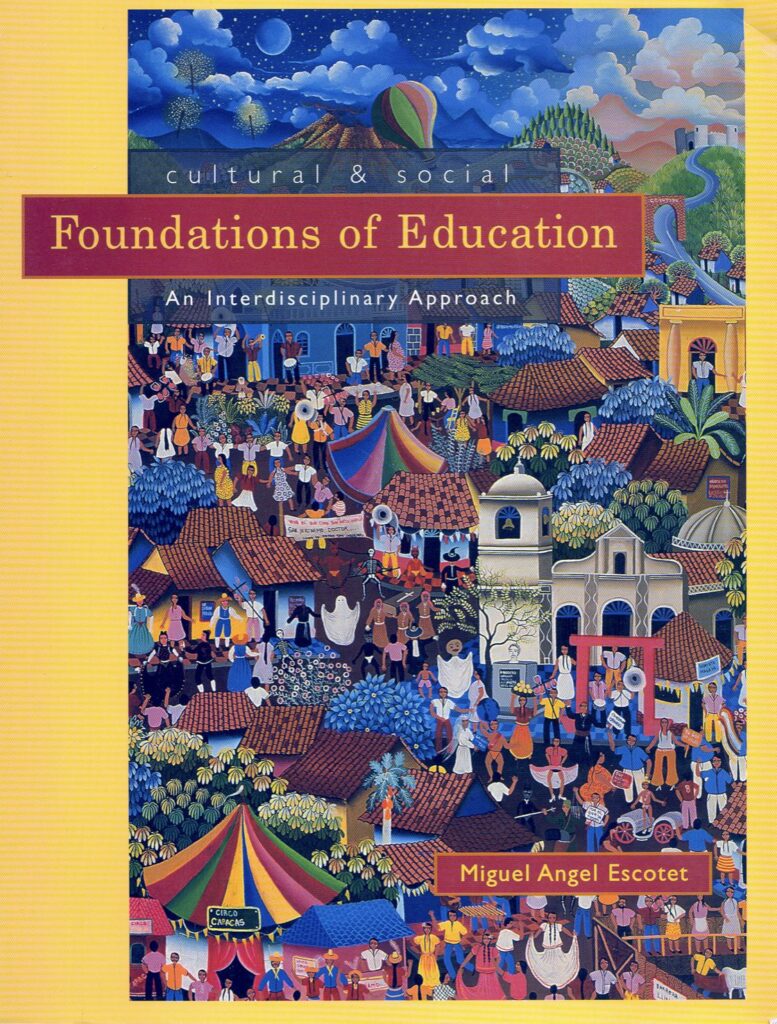
Students belong to a diverse society in all respects. Students learn in many different ways; thus I try to help them in multiple ways in approaching new material. I do my best to be flexible and to provide them alternate routes to knowledge and understanding, even though not always with success because the burden of connecting does not rest entirely on the instructor. The choice of appropriate tools and techniques is dependent on the nature of the student and the specific aims of the course. For instance, readings and lectures can motivate and outline material; research, homework, and simulations can help students develop a deeper understanding; newsgroups, cooperative learning, and discussions can facilitate student interaction and awareness of the affective domains of learning; libraries, databases, and the Internet can provide access to current information, while student papers, exams, presentations, and projects can encourage critical thinking and effective communication.
However, not all students will respond to the same teaching techniques. Some may learn well from traditional lectures, while others may respond better to discussion groups, group projects, written exercises, creative tasks, or demonstrations. I believe that it is important to use a combination of these and other methods to guide different students towards subject proficiency in the way most natural for them. I offer myself to my students as an individual mentor, helper, and guide, especially with graduates. I am available to students in person, by phone, or Internet and I encourage them to share with me any issue, achievement, or failure that they experience during the learning process. Further, I believe that students need to feel confident gaining new information and making it their own. They learn when they are engaged. Teaching is the most effective when students are actively participating in the process.
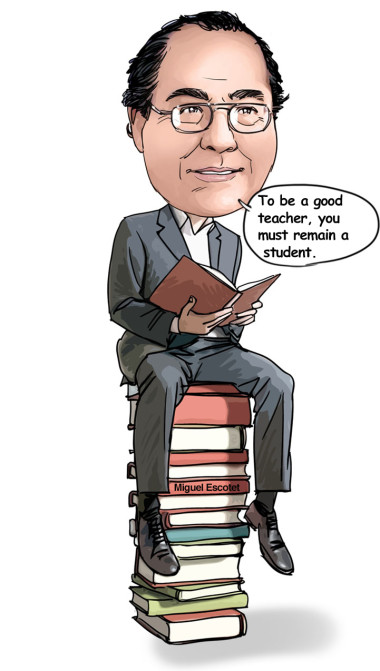
I believe that being a teacher involves much more than just imparting facts and methodologies; my major challenge lies in inspiring students and facilitating their efforts to become self-educators. Learning as I said before, is a lifelong process that does not end when a class is over or a degree is conferred, particularly for future teachers. I do my best to motivate them towards such a goal. To this end I have developed different resources, such as an Internet site, to allow students to practice that experience of self-learning by interacting with other dimensions and then by teaching the teacher their newfound interpretations. These types of strategies help students foster the ability to search for information, as well as to select and interpret that information. Given the demand for quality education, I do not measure excellence in terms of the amount of knowledge accumulated, but rather the capacity to evaluate the possibilities and limitations of that knowledge. This is one of the reasons I use a wide range of evaluation techniques to reduce, as much as I can, the inevitable subjectivity of measuring learning and the most difficult task of formal teaching.

My several decades of teaching have encompassed everything from elementary education to graduate education, from a traditional system to distant or online learning and non-formal systems, and they have taught me what can be effective. I have pursued multiple techniques: guided research, live-in learning-work courses, guided didactic conversations, lectures, field seminars, negotiation games, individual or small group projects, distant and programmed techniques, and so on. But above all, I have learned that I need to evolve every single moment to keep innovation as part of my teaching; to practice research as a way of improving my strategies, being updated and searching for knowledge; to behave more as a learner than as a teacher; to help students develop objective criticism and search for new channels for a more enlightened future. I strongly believe that to be a good teacher you must remain a student.
Thus, the best learning strategies that I have experienced are to teach interactively the search for knowledge, to practice the highest ethical standards, to treat students with respect and concern for their achievement, and to be dedicated to my profession with love and full commitment. However, I am by no means satisfied and I am still searching for ways to improve my teacher-learner responsibility.
_________________
©2022 Miguel Angel Escotet. All rights reserved. Permission to reprint with appropriate citing. Based on my previous writing and teaching practices in all levels of education, from early childhood education to post-doctoral.
Quotes on Education
The guardian higher education, neuroscience news, chronicle of higher education.
RSS Error: A feed could not be found at `http://chronicle.com/section/News/6/rss`; the status code is `403` and content-type is `text/html; charset=UTF-8`
Psychology News from APA
Scientific american.

University change is inevitable. Progress and innovation is a choice
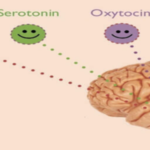
How to hack your happy hormones: A sample list

Ithaca or the interim homelands
Novedades del blog académico.

El ser humano como eje del desarrollo

La formación deformada

Comunicación, mass media y tecnología

Destapar el cielo. Una metáfora para el viaje de la vida
Blog catchall- cajón de sastre.

«Sé romero»

Aprender a aprender en compañía
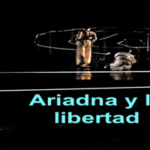
Ariadna y la libertad. Una dialéctica entre amor y conocimiento

Un tambor que despierte pasiones. Pensamientos intimistas de un lector empedernido
Copyright © 2008-2024 Miguel Ángel Escotet. All Rights Reserved.

- Darrell W. Krueger Library
Home > JOURNALS > Essays in Education > Vol. 28 > Iss. 1 (2021)
A Review of My Teaching Philosophy Through a COVID-19 Lens
Michelle L. Boettcher , Clemson University Follow
This essay focuses on how the pandemic has informed my teaching philosophy and centered the humanness of students rather than course content or my role, identity, and pedagogy as instructor. The article includes three examples from my teaching philosophy: Expertise, Mistakes, and Reflection. As a result of the pandemic, I have added caring as a part of course content, reframed the idea of “no excuse” for late work, and incorporated reflection as an element of academic rigor. As a result, a renewed focus on student learning has usurped my past inclination to focusing on my teaching in my philosophy statement.
Recommended Citation
Boettcher, Michelle L. (2022) "A Review of My Teaching Philosophy Through a COVID-19 Lens," Essays in Education : Vol. 28: Iss. 1, Article 4. Available at: https://openriver.winona.edu/eie/vol28/iss1/4
Since February 09, 2022
Included in
Scholarship of Teaching and Learning Commons
To view the content in your browser, please download Adobe Reader or, alternately, you may Download the file to your hard drive.
NOTE: The latest versions of Adobe Reader do not support viewing PDF files within Firefox on Mac OS and if you are using a modern (Intel) Mac, there is no official plugin for viewing PDF files within the browser window.
- Journal Home
- Journal History
- Aims & Scope
- Editorial Board
- Publication Ethics Statement
- Submit Article
- Most Popular Papers
- Receive Email Notices or RSS
Advanced Search
ISSN: 1527-9359
Darrell W. Krueger Library | 507.457.5140 | [email protected] | In Libris Libertas
Winona State University | P.O. Box 5838 | 175 West Mark Street | Winona, MN 55987 | 507.457.5000 | 1.800.342.5978
My Account | Accessibility Statement | Privacy | Copyright
Reflecting on the Learner Centered Teaching Philosophy: benefits of student-centered learning 2023
Learner Centered Teaching Philosophy I believe that learner-centered teaching is the most effective way to promote student learning. In a learner-centered classroom, the focus is on the students and their individual needs. The teacher acts as a facilitator, providing resources and guidance, but the students are responsible for their own learning.
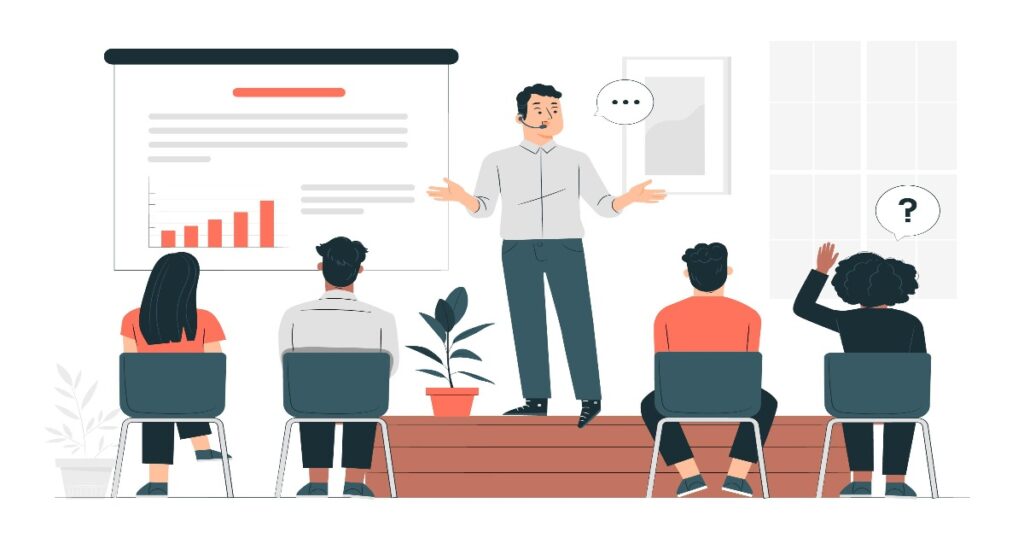
Table of Contents
The benefits of learner centered teaching philosophy.
There are many benefits to learner centered teaching Philosophy. First, it helps students to develop a deeper understanding of the material. When students are actively engaged in the learning process, they are more likely to retain what they have learned. Second, learner centered teaching Philosophy helps students to develop critical thinking skills. By asking questions, discussing ideas, and solving problems, students learn to think for themselves. Third, learner centered teaching fosters a sense of community in the classroom. When students work together to learn, they build relationships with each other and with the teacher.
In this reflection, I will discuss my own experiences with learner centered teaching. I will also share some of the strategies that I use to create a learner centered classroom. I believe that learner centered teaching is the best way to help students reach their full potential, and I am committed to using this approach in my own teaching.
What is learner centered teaching Philosophy?
Learner centered teaching is an educational philosophy that focuses on the needs of the learner. It is based on the belief that all learners are unique and have different learning styles and preferences. Learner centered teachers create a classroom environment that is conducive to learning, and they provide opportunities for students to actively participate in their own learning.
Why is learner centered teaching important?
Learner centered teaching is important because it helps students to become more engaged in their learning. When students are engaged, they are more likely to learn effectively. Learner centered teaching also helps students to develop the skills they need to be successful in college and beyond.
What are the key principles of learner centered teaching Philosophy?
The key principles of learner centered teaching include:
- Focus on the learner. The teacher’s role is to facilitate learning, not to deliver content.
- Create a supportive learning environment. The classroom should be a safe and welcoming place where students feel comfortable taking risks and making mistakes.
- Provide opportunities for active learning. Students should be actively involved in their own learning, not just passive recipients of information.
- Recognize and value diversity. All learners are different, and their learning styles and preferences should be respected.
- Encourage collaboration and teamwork. Learning is more effective when students work together.
- Provide feedback and support. Students need feedback to know how they are doing and to make progress.
How can I implement learner centered teaching in my classroom?
There are many ways to implement learner centered teaching in your classroom. Here are a few ideas:
- Start by getting to know your students. What are their interests? What are their learning styles?
- Create a classroom environment that is conducive to learning. This means making the classroom a safe and welcoming place where students feel comfortable taking risks and making mistakes.
- Provide opportunities for active learning. This could include activities such as group work, problem-solving, and hands-on projects.
- Recognize and value diversity. This means acknowledging that all learners are different and that their learning styles and preferences should be respected.
- Encourage collaboration and teamwork. This can be done by assigning group projects, having students work in pairs, or creating a “learning community” in your classroom.
- Provide feedback and support. This could be done through individual conferences, group discussions, or written feedback.

Reflection on my own learner centered teaching philosophy
I believe that learner centered teaching is the most effective way to help students learn. I have always been a student-centered teacher, and I have found that my students are more engaged and successful when they are actively involved in their own learning. I am always looking for new ways to implement learner centered teaching in my classroom, and I am always learning from my students.
I believe that the key to effective learner centered teaching is to create a classroom environment where students feel safe, respected, and supported. When students feel comfortable taking risks and making mistakes, they are more likely to be engaged in their learning. I also believe that it is important to provide students with opportunities to collaborate and work together. This helps students to learn from each other and to develop their social skills.
I am committed to continuing to learn about learner centered teaching and to finding new ways to implement it in my classroom. I believe that this is the best way to help my students reach their full potential.
Learner centered teaching Philosophy is an important educational philosophy that can help students to become more engaged in their learning and to develop the skills they need to be successful in college and beyond. If you are a teacher, I encourage you to learn more about learner centered teaching and to find ways to implement it in your classroom.
examples of learner centered philosophy
- Focus on the learner. The teacher’s role is to facilitate learning, not to deliver content. This means that the teacher should be aware of the individual needs of each student and should tailor the learning experience accordingly.
- Create a supportive learning environment. The classroom should be a safe and welcoming place where students feel comfortable taking risks and making mistakes. This means that the teacher should create a positive learning environment where students feel respected and valued.
- Provide opportunities for active learning. Students should be actively involved in their own learning, not just passive recipients of information. This means that the teacher should provide opportunities for students to engage in hands-on activities, problem-solving, and group work.
- Recognize and value diversity. All learners are different, and their learning styles and preferences should be respected. This means that the teacher should provide a variety of learning activities that appeal to different learners.
- Encourage collaboration and teamwork. Learning is more effective when students work together. This means that the teacher should encourage students to collaborate on projects and assignments.
- Provide feedback and support. Students need feedback to know how they are doing and to make progress. This means that the teacher should provide regular feedback to students, both positive and constructive.
Here are some specific examples of how these principles can be implemented in the classroom:
- Focus on the learner: The teacher could start by getting to know each student’s interests and learning styles. They could then use this information to tailor the learning experience accordingly. For example, if a student is interested in science, the teacher could provide them with additional opportunities to learn about science. Or, if a student learns best by doing, the teacher could provide them with more hands-on activities.
- Create a supportive learning environment: The teacher could create a supportive learning environment by establishing clear expectations, providing positive reinforcement, and addressing any concerns that students may have. For example, the teacher could create a “no-blame” culture in the classroom, where students feel comfortable making mistakes without fear of being ridiculed.
- Provide opportunities for active learning: The teacher could provide opportunities for active learning by using a variety of teaching methods, such as group work, problem-solving, and hands-on activities. For example, the teacher could have students work in groups to solve a problem, or they could have students create a model of a scientific concept.
- Recognize and value diversity: The teacher could recognize and value diversity by providing a variety of learning materials and activities that appeal to different learners. For example, the teacher could provide books and articles in different languages, or they could have students work on projects that relate to their own cultures.
- Encourage collaboration and teamwork: The teacher could encourage collaboration and teamwork by assigning group projects, having students work in pairs, or creating a “learning community” in the classroom. For example, the teacher could have students work together to create a presentation, or they could have students form study groups to prepare for a test.
- Provide feedback and support: The teacher could provide feedback and support by giving students regular feedback on their work, both positive and constructive. They could also provide students with opportunities to get help from the teacher or from other students. For example, the teacher could provide students with feedback on their writing, or they could have students meet with the teacher during office hours if they need help with a particular concept.
learn more about most important philosopher Plato , Socrates and Aristotle
know about why socrates died poisoned and baggio died standing
What is learner centered teaching?
What are the key principles of learner centered teaching.
The key principles of learner centered teaching include: Focus on the learner. The teacher’s role is to facilitate learning, not to deliver content. Create a supportive learning environment. The classroom should be a safe and welcoming place where students feel comfortable taking risks and making mistakes. Provide opportunities for active learning. Students should be actively involved in their own learning, not just passive recipients of information. Recognize and value diversity. All learners are different, and their learning styles and preferences should be respected. Encourage collaboration and teamwork. Learning is more effective when students work together. Provide feedback and support. Students need feedback to know how they are doing and to make progress.
There are many ways to implement learner centered teaching in your classroom. Here are a few ideas: Start by getting to know your students. What are their interests? What are their learning styles? Create a classroom environment that is conducive to learning. This means making the classroom a safe and welcoming place where students feel comfortable taking risks and making mistakes. Provide opportunities for active learning. This could include activities such as group work, problem-solving, and hands-on projects. Recognize and value diversity. This means acknowledging that all learners are different and that their learning styles and preferences should be respected. Encourage collaboration and teamwork. This can be done by assigning group projects, having students work in pairs, or creating a “learning community” in your classroom. Provide feedback and support. This could be done through individual conferences, group discussions, or written feedback.
Leave a Comment Cancel reply
Save my name, email, and website in this browser for the next time I comment.
Recent Posts

Alex Guerrero: Rethinking Politics, Law, and Morality Through a Philosophical Lens

What Is Parenting? Guide to Parenting: Love, Growth, & Endless Laughs in 2024
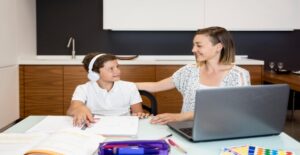
Ultimate Guide to Tutoring Your Child After School 2024

Navigating the Labyrinth: Philosophy of Information and the Spread of Misinformation

Exploring the Richness of Emory University Philosophy Department 2024

Ethics in a Technological Age 2024

Exploring the Philosophy of Religion: Understanding the Essence 2024

Unraveling the Mysterious about socrates died poisoned nietzsche died hallucinating
© philosophymeaning.com | All rights reserved
Privacy Policy | Disclaimer | About Us | Contact Us
- MyU : For Students, Faculty, and Staff
- Academic Leaders
- Faculty and Instructors
- Graduate Students and Postdocs
Center for Educational Innovation
- Campus and Collegiate Liaisons
- Pedagogical Innovations Journal Club
- Teaching Enrichment Series
- Recorded Webinars
- Video Series
- All Services
- Teaching Consultations
- Student Feedback Facilitation
- Instructional Media Production
- Curricular and Educational Initiative Consultations
- Educational Research and Evaluation
- Thank a Teacher
- All Teaching Resources
- Aligned Course Design
- Active Learning
- Team Projects
- Active Learning Classrooms
- Leveraging the Learning Sciences
- Inclusive Teaching at a Predominantly White Institution
- Strategies to Support Challenging Conversations in the Classroom
- Assessments
- Online Teaching and Design
- AI and ChatGPT in Teaching
- Documenting Growth in Teaching
- Early Term Feedback
- Scholarship of Teaching and Learning
- Writing Your Teaching Philosophy
- All Programs
- Assessment Deep Dive
- Designing and Delivering Online Learning
- Early Career Teaching and Learning Program
- International Teaching Assistant (ITA) Program
- Preparing Future Faculty Program
- Teaching with Access and Inclusion Program
- Teaching for Student Well-Being Program
- Teaching Assistant and Postdoc Professional Development Program
Your teaching philosophy is a self-reflective statement of your beliefs about teaching and learning. It's a one to two page narrative that conveys your core ideas about being an effective teacher in the context of your discipline. It develops these ideas with specific, concrete examples of what the teacher and learners will do to achieve those goals. Importantly, your teaching philosophy statement also explains why you choose these options.
+ Getting Started
Your reasons for writing a teaching philosophy may vary. You might be writing it as an exercise in concisely documenting your beliefs so that you can easily articulate them to your students, peers, or a search committee. It might serve as the introduction to your teaching portfolio. Or, it can serve as a means of professional growth as it requires you to give examples of how you enact your philosophy, thus requiring you to consider the degree to which your teaching is congruent with your beliefs.
Generating ideas
Teaching philosophies express your values and beliefs about teaching. They are personal statements that introduce you, as a teacher, to your reader. As such, they are written in the first person and convey a confident, professional tone. When writing a teaching philosophy, use specific examples to illustrate your points. You should also discuss how your values and beliefs about teaching fit into the context of your discipline.
Below are categories you might address with prompts to help you begin generating ideas. Work through each category, spending time thinking about the prompts and writing your ideas down. These notes will comprise the material you’ll use to write the first draft of your teaching philosophy statement. It will help if you include both general ideas (‘I endeavor to create lifelong learners’) as well as specifics about how you will enact those goals. A teaching philosophy template is also available to help you get started.
Questions to prompt your thinking
Your concept of learning.
What do you mean by learning? What happens in a successful learning situation? Note what constitutes "learning" or "mastery" in your discipline.
Your concept of teaching
What are your values, beliefs, and aspirations as a teacher? Do you wish to encourage mastery, competency, transformational learning, lifelong learning, general transference of skills, critical thinking? What does a perfect teaching situation look like to you and why? How are the values and beliefs realized in classroom activities? You may discuss course materials, lesson plans, activities, assignments, and assessment instruments.
Your goals for students
What skills should students obtain as a result of your teaching? Think about your ideal student and what the outcomes of your teaching would be in terms of this student's knowledge or behavior. Address the goals you have for specific classes or curricula and that rational behind them (i.e., critical thinking, writing, or problem solving).
Your teaching methods
What methods will you consider to reach these goals and objectives? What are your beliefs regarding learning theory and specific strategies you would use, such as case studies, group work, simulations, interactive lectures? You might also want to include any new ideas or strategies you want to try.
Your interaction with students
What are you attitudes towards advising and mentoring students? How would an observer see you interact with students? Why do you want to work with students?
Assessing learning
How will you assess student growth and learning? What are your beliefs about grading? Do you grade students on a percentage scale (criterion referenced) or on a curve (norm referenced)? What different types of assessment will you use (i.e. traditional tests, projects, portfolios, presentations) and why?
Professional growth
How will you continue growing as a teacher? What goals do you have for yourself and how will you reach them? How have your attitudes towards teaching and learning changed over time? How will you use student evaluations to improve your teaching? How might you learn new skills? How do you know when you've taught effectively?
+ Creating a Draft
Two ways of organizing your draft.
Now that you've written down your values, attitudes, and beliefs about teaching and learning, it's time to organize those thoughts into a coherent form. Perhaps the easiest way of organizing this material would be to write a paragraph covering each of the seven prompts you answered in the Getting Started section. These would then become the seven major sections of your teaching philosophy.
Another way of knitting your reflections together—and one that is more personal—is to read through your notes and underscore ideas or observations that come up more than once. Think of these as "themes" that might point you toward an organizational structure for the essay. For example, you read through your notes and realize that you spend a good deal of time writing about your interest in mentoring students. This might become one of the three or four major foci of your teaching philosophy. You should then discuss what it says about your attitudes toward teaching, learning, and what's important in your discipline.
No matter which style you choose, make sure to keep your writing succinct. Aim for two double-spaced pages. And don't forget to start with a "hook." Your job is to make your readers want to read more; their level of engagement is highest when they read your opening line. Hook your readers by beginning with a question, a statement, or even an event from your past.
Using specific examples
Remember to provide concrete examples from your teaching practice to illustrate the general claims you make in your teaching philosophy. The following general statements about teaching are intended as prompts to help you come up with examples to illustrate your claims about teaching. For each statement, how would you describe what happens in your classroom? Is your description specific enough to bring the scene to life in a teaching philosophy?
"I value helping my students understand difficult information. I am an expert, and my role is to model for them complex ways of thinking so that they can develop the same habits of mind as professionals in the medical field."
"I enjoy lecturing, and I'm good at it. I always make an effort to engage and motivate my students when I lecture."
"It is crucial for students of geology to learn the techniques of field research. An important part of my job as a professor of geology is to provide these opportunities."
"I believe that beginning physics students should be introduced to the principles of hypothesis generation, experimentation, data collection, and analysis. By learning the scientific method, they develop critical thinking skills they can apply to other areas of their lives. Small group work is a crucial tool for teaching the scientific method."
"As a teacher of writing, I am committed to using peer review in my classes. By reading and commenting on other students' work in small cooperative groups, my students learn to find their voice, to understand the important connection between writer and audience, and to hone their editing skills. Small group work is indispensible in the writing classroom."
Go back to the notes you made when getting started and underline the general statements you’ve made about teaching and learning. As you start drafting, make sure to note the specific approaches, methods, or products you use to realize those goals.
+ Assessing Your Draft
Assessing your draft teaching philosophy.
According to a survey of search committee chairs by the University of Michigan Center for Research on Learning and Teaching, there are five elements that are shared by strong teaching philosophy statements:
- They offer evidence of practice (specific examples)
- They are student-centered
- They demonstrate reflectiveness
- They demonstrate that the writer values teaching
- They are well written, clear, and readable
Now that you’ve completed an initial draft, ask whether your statement captures these elements and how well you articulate them.
You might find it useful to compare your draft to other teaching philosophies in your discipline. It can also be useful to have a colleague review your draft and offer recommendations for revision. Consider printing out a teaching philosophy rubric from our “Rubrics and Samples” tab to provide your reviewer with guidelines to assess your draft. These exercises will give you the critical distance necessary to see your teaching philosophy objectively and revise it accordingly.
+ Rubrics and Samples
Rubrics and sample teaching philosophies.
Here are links to three teaching philosophy rubrics to help you assess your statement. We have included four different rubrics for you to choose from. These rubrics cover similar elements, and one is not necessarily better than the other. Your choice of which to use should be guided by how comfortable you feel with the particular instrument and how usable you find it.
- Teaching Philosophy Rubric 1 This rubric allows a reader to rate several elements of persuasiveness and format on a scale of 1 to 5.
- Teaching Philosophy Rubric 2 This rubric contains prompts for assessing purpose and audience, voice, beliefs and support, and conventions.
- Teaching Philosophy Rubric 3 This rubric contains prompts for assessing content, format, and writing quality.
- Rubric for Statements of Teaching Philosophy This rubric was developed by Kaplan et. al. from the University of Michigan.
- Marisol Brito – philosophy
- Benjamin Harrison – biology
- Jamie Peterson – psychology
- The University of Michigan has a wide variety of samples organized by field of study.
- Caroline Hilk
- Research and Resources
- Why Use Active Learning?
- Successful Active Learning Implementation
- Addressing Active Learning Challenges
- Why Use Team Projects?
- Project Description Examples
- Project Description for Students
- Team Projects and Student Development Outcomes
- Forming Teams
- Team Output
- Individual Contributions to the Team
- Individual Student Understanding
- Supporting Students
- Wrapping up the Project
- Addressing Challenges
- Course Planning
- Working memory
- Retrieval of information
- Spaced practice
- Active learning
- Metacognition
- Definitions and PWI Focus
- A Flexible Framework
- Class Climate
- Course Content
- An Ongoing Endeavor
- Learn About Your Context
- Design Your Course to Support Challenging Conversations
- Design Your Challenging Conversations Class Session
- Use Effective Facilitation Strategies
- What to Do in a Challenging Moment
- Debrief and Reflect On Your Experience, and Try, Try Again
- Supplemental Resources
- Align Assessments
- Multiple Low Stakes Assessments
- Authentic Assessments
- Formative and Summative Assessments
- Varied Forms of Assessments
- Cumulative Assessments
- Equitable Assessments
- Essay Exams
- Multiple Choice Exams and Quizzes
- Academic Paper
- Skill Observation
- Alternative Assessments
- Assessment Plan
- Grade Assessments
- Prepare Students
- Reduce Student Anxiety
- SRT Scores: Interpreting & Responding
- Student Feedback Question Prompts
- Research Questions and Design
- Gathering data
- Publication
- GRAD 8101: Teaching in Higher Education
- Finding a Practicum Mentor
- GRAD 8200: Teaching for Learning
- Proficiency Rating & TA Eligibility
- Schedule a SETTA
- TAPD Webinars
Kacey Legare
Clark university mat program 2020, teaching philosophy and reflection on identity as a teacher.
The guiding principle behind my teaching practice is that all students bring strength and capabilities into the classroom and it is my duty to guide them to access and build upon those attributes of which they already have. My own personal mantra is “We are already carrying everything we need.” Briefly, this means that we all have the abilities within us to succeed and persevere in our own unique ways. This translates to how I view education and how I teach. In my classroom, in order to illustrate this philosophy, students must be able to trust their own abilities and see themselves as capable and successful learners.
First, I aim to create a safe learning environment for all of my students. This includes developing trust and building community. Students grow and push themselves when they feel safe to take risks and try out new ideas. As a teacher, I act intentionally to bring out participation in all students through multiple channels. This allows me to hear all students in different ways and validate their ideas in a genuine way. As a class, we build our community daily through our morning meeting and routine which consists of a class-wide greeting, sharing with opportunity for questions and comments, and journaling in conversation journals between students and teachers. This allows an opportunity for all students to feel welcomed, respected, and heard by their classmates and their teachers each and every day. By creating this expectation of inclusion, students develop a sense that our classroom is a place where they are safe and supported in their discoveries and learning.
Additionally, as a teacher, I strive to incorporate collaborative experiences into my lessons and units. I know that teamwork, cooperation, and respect for difference are all benefits to including partner-work and group-work in a classroom. This is accomplished through careful decisions around partnerships, effective use of small groups, and by allowing appropriate time and space for successful group discussions and activities. Students develop strong academic relationships where they can rely on one another as resources. They bounce ideas off of one another, confirm ideas, and support each other. This not only builds upon our classroom community and trust but also allows me to remove myself from the role as the “all-knowing” teacher and gives students opportunities to use each other to gather new information and learn new concepts.
Being able to reach and connect to all students academically is also important as their teacher. In order to allow all students to be confident in their own abilities and believe that they are smart, units, lessons, and activities must meet their diverse needs. Allowing activities to be accessible to students with all needs starts with acknowledging my students’ diverse backgrounds racially, economically, and culturally, including their language backgrounds. Having lessons where students can access the material in multiple, different, low-stakes ways is necessary to ensure all students can successfully retain and connect to the lesson. Likewise, it is important to have meaningful extensions and areas where you can push and extend student inquiry to allow students a deep and memorable interaction with the material. The balance between having low thresholds while maintaining high ceilings in lessons is essential for meeting the various needs and abilities all students have.
In addition to catering to the wide range of strengths and tendencies of the learners in my class, it is also important to me to connect subjects and disciplines together . This engages all types of learning and gives students connections between subjects that help to enhance their overall understanding. This could be shown by incorporating literature into a history lesson on culture or into a math lesson on making arrays. This could be shown by using mathematical practices like perseverance and logic to solve engineering projects. By connecting subjects together, students have more chances to connect material and build upon prior experiences. When students discover and build upon their own understandings, they become agents of their own learning.
By combining these practices and goals, I am able to allow students to trust themselves and the environment of the classroom to become capable learners and problem solvers within the community of classmates and teachers. Students who build trust and community, collaborate, access the material in multiple ways, and connect across disciplines are able to become confident in their own abilities and intelligence. This prepares them to become capable individuals in their lives in school as well as outside of school regardless of where their lives take them after my classroom. They are already carrying everything they need, they just need to tap into it.
Learner-Centered Teaching in Mathematics Education
- Reference work entry
- First Online: 01 January 2014
- Cite this reference work entry

- Michelle Stephan 2
796 Accesses
8 Citations
Learner-centered teaching is an approach to mathematics instruction that places heavy emphasis on the students taking responsibility for problem solving and inquiry. The teacher is viewed as a facilitator by posing problems and guiding students as they work with partners toward creating a solution.
Characteristics
Intellectual autonomy.
Many researchers have contended that one of the most important contributions that education can make in individuals’ lives is to their development of autonomy (Piaget 1948/1973 ). Autonomy is defined as the determination to be self-governing, to make rules for oneself rather than rely on the rules of others to make one’s decisions (heteronomy). Kamii ( 1982 ) suggests that autonomy is the ability to think for oneself and make decisions independently of the promise of rewards or punishments. In relation to education, Richards ( 1991 ) distinguishes between two types of traditions in the mathematics education of children, what he terms school...
This is a preview of subscription content, log in via an institution to check access.
Access this chapter
- Available as PDF
- Read on any device
- Instant download
- Own it forever
- Available as EPUB and PDF
- Durable hardcover edition
- Dispatched in 3 to 5 business days
- Free shipping worldwide - see info
Tax calculation will be finalised at checkout
Purchases are for personal use only
Institutional subscriptions
Akyuz D (2010) Supporting a standards-based teaching and learning environment: a case study of an expert middle school mathematics teacher. Unpublished doctoral dissertation. University of Central Florida
Google Scholar
Anthony W (1973) Learning to discover rules by discovery. J Educ Psychol 64:325–328
Article Google Scholar
Barrows H, Tamblyn R (1980) Problem-based learning: an approach to medical education. Springer, New York
Bowers J, Cobb P, McClain K (1999) The evolution of mathematical practices: a case study. Cognit Instruct 17(1):25–64
Chung S, Walsh D (2000) Unpacking child-centeredness: a history of meanings. J Curric Stud 32(2):215–234
Dewey J (1938) Democracy and education in the world of today. Essays (pamphlet series). Society for Ethical Culture, New York
Hiebert J, Carpenter T, Fennema E, Fuson K, Murray H (1997) Making sense: teaching and learning mathematics with understanding. Heineman, Portsmouth
Jonassen D (1991) Objectivism vs. constructivism. Edu Tech Res Develop 39(3):5–14
Kamii C (1982) Number in preschool and kindergarten. National Association for the Education of Young Children, Washington, DC
Kirschner P, Sweller J, Clark R (2010) Why minimal guidance during instruction does not work: an analysis of the failure of constructivist, discovery, problem-based, experiential, and inquiry-based teaching. Educ Psychol 41(2):75–86
Kolb D, Fry R (1975) Toward an applied theory of experiential learning. In: Cooper C (ed) Studies of group process. Wiley, New York, pp 33–57
National Council of Teachers of Mathematics (1989) Curriculum and evaluation standards for school mathematics. Author, Reston, VA
National Council of Teachers of Mathematics (2000) Principles and standards for school mathematics. Author, Reston
National Council of Teachers of Mathematics (2006) Curriculum focal points for prekindergarten through grade 8 mathematics: a quest for coherence. Author, Reston
National Governor’s Association and Chief Council of State School Officers (2011) Common Core State Standards for Mathematics (CCSS). http://corestandards.org/the-standards/mathematics . Accessed 14 May 2012
Piaget J (1948/1973) To understand is to invent. Grossman, New York
Richards J (1991) Mathematical discussions. In: von Glasersfeld E (ed) Radical constructivism in mathematics education. Kluwer, Dordrecht, pp 13–52
Chapter Google Scholar
Stephan M, Akyuz D (2012) A proposed instructional theory for integer addition and subtraction. J Res Math Educ 43(4):428–464
Stephan M, Cobb P, Gravemeijer K, Estes B (2001) The role of tools in supporting students’ development of measuring conceptions. In: Cuoco A (ed) The roles of representation in school mathematics. NCTM, Reston, pp 63–76
Tarr J, Reys R, Reys B, Chávez O, Shih J, Osterlind S (2008) The impact of middle-grades mathematics curricula and the classroom learning environment on student achievement. J Res Math Educ 39(3):247–280
Thompson P, Lambdin D (1994) Concrete materials and teaching for mathematical understanding. Arith Teach 41(9):556–558
Yackel E, Cobb P (1994) Sociomathematical norms, argumentation and autonomy in mathematics. J Res Math Educ 27:458–477
Download references
Author information
Authors and affiliations.
College of Education, Middle Secondary Department, The University of North Carolina at Charlotte, University City Blvd, 28223-0001, Charlotte, NC, USA
Michelle Stephan
You can also search for this author in PubMed Google Scholar
Corresponding author
Correspondence to Michelle Stephan .
Editor information
Editors and affiliations.
Department of Education, Centre for Mathematics Education, London South Bank University, London, UK
Stephen Lerman
Rights and permissions
Reprints and permissions
Copyright information
© 2014 Springer Science+Business Media Dordrecht
About this entry
Cite this entry.
Stephan, M. (2014). Learner-Centered Teaching in Mathematics Education. In: Lerman, S. (eds) Encyclopedia of Mathematics Education. Springer, Dordrecht. https://doi.org/10.1007/978-94-007-4978-8_87
Download citation
DOI : https://doi.org/10.1007/978-94-007-4978-8_87
Published : 31 July 2014
Publisher Name : Springer, Dordrecht
Print ISBN : 978-94-007-4977-1
Online ISBN : 978-94-007-4978-8
eBook Packages : Humanities, Social Sciences and Law
Share this entry
Anyone you share the following link with will be able to read this content:
Sorry, a shareable link is not currently available for this article.
Provided by the Springer Nature SharedIt content-sharing initiative
- Publish with us
Policies and ethics
- Find a journal
- Track your research
- Personalized Learning
- Student Agency and Voice
- Competency-Based Education
- Real-World Connections
- Student-Centered Research
- Past Projects
- About the Students at the Center Hub
Reflections on Student-Centered Learning Part 1- Student Perspective
- Published November 27, 2015
- By SARAH HATTON

The International Association for K-12 Online Learning ( iNACOL ) hosted their annual Symposium in Orlando, FL. last week. I attended—along with over 3,000 educators, experts, thought leaders, and innovators—and left with a sense of both the enormity of the charge of educating all young people to succeed in the world of the future, and the importance of taking up this charge with the vigor and passion that was exhibited by symposium presenters and attendees.
Though I attended several thought-provoking and engaging sessions, the two that stand out for me are the ones that featured voices of the students and educators who are doing the hard (and rewarding) work to personalize learning. In these two sessions—the first a panel of high school and middle school student respondents from Charleston, South Carolina and Clermont, Florida, and the second a conversation with iNACOL Teacher of the Year Paula Barr— I was struck by how closely aligned these student and teacher experiences are with both what research tells us about the best approaches to teaching and learning, and with each other—the teacher experience with the student experience across age level and school district.
Here are my observations:
What does your classroom look like?
For the high school students, personalized learning classrooms are set with different work areas for students to move among throughout their day, including couches, comfy chairs, and modular circular tables that can be reconfigured into singles or small groups. The tables have white board surface so students can work out problems together directly on the tabletop. Students acknowledged that teachers and administrators might be reticent to put living room furniture into classrooms, but from their perspective having more comfortable chairs doesn’t make them relax; “it’s much easier to fall asleep in rows.”
Relationships (peer to peer and student-teacher)
Students note a significant change in their peer-to-peer and student-teacher relationships as a result of personalized learning. Students are encouraged to seek assistance from their peers before consulting the teacher. Unlike traditional stand and deliver education, it also gives them the opportunity to interact with a wide variety of their classmates as they learn that different peers have strengths in different areas. The peer interaction frees up teacher time for more one-on-one interaction with each student.
Student ownership
The students clearly and passionately conveyed that personalized learning has empowered them to take ownership of their education. They don’t feel that they need to get permission from the teacher for every move they make in the classroom, and are more frequently turning to their own problem-solving or the aid of peers as a first resort. This is derived from the class’ Standard Operating Procedure (SOP), which states that when students encounter an academic hurdle, they will first consult a peer, second revisit course material, and third ask the teacher for assistance. Students in both schools had similar classroom procedures that were developed and agreed to by the students. This allowed them to feel that they had a stake in their classroom community. “You don’t want to agree to something you didn’t have a say in.”
Overall, the biggest change for these students was going from being told what to do every day to having to guide their own paths. With the help of their roadmaps, and after acclimating to the new way of learning, student love this new sense of ownership and responsibility.
Achievement
These students clearly feel increased ownership from personalized learning and are building strong relationships through their education. What about achievement, though? Are they learning as much as they did in traditional learning environments, or more?
The high school students spoke at length about their transition to mastery-based grading. Students compared this to growth mindset grading—the categories of “emerging” and “near mastery” make the students feel much more hopeful than Cs, Ds, and Fs. While they are only required to achieve the “mastery” level before moving on, students often strive for the “exceeding mastery” distinction. Students who have earned “exceeding mastery” are eligible to teach mini lessons for their peers.
One of the panelists shared that in more traditional classrooms, he often struggled with material but was reticent to raise his hand and ask additional questions because he didn’t want to slow the whole group down when everyone else was ready to advance. In the personalized learning environment though, “I can do everything at my own pace and actually learn it,” he said, “I can master it.” Their classroom is a no-judgment zone—it’s OK that some students are ahead and others are behind, and those students that are ahead are often capable and willing to help those that need support.
Preparation for the future
The students were very aware of the role high school plays in preparing them for college and their futures. They acknowledge that taking responsibility for their progress and learning is a skill they will use in college and beyond. They are learning important time-management skills and how to structure their workload to avoid procrastination. Finally, many of the students spoke about growth mindset and how they are applying growth mindset principles to their schoolwork and beyond. One student explained that he has been mentoring his older brother to adopt a growth mindset in his professional life to move beyond the career he feels stuck in to something more aspirational.
Advice for those who are just getting started
For the last question of the session, the moderate invited students to give advice to those just getting started with personalized learning.
For educators:
– Teachers need to know who their students are, what they’re learning, and how to respect the way they learn best – Adjustment and learning how everything works will take a while, but in the end it will help us with our future
For students:
– Be open to your teacher—don’t think they don’t know what they’re doing because they’re trying something new – Trust your teacher—they’ll be there for you even after you’re done for your classes – Don’t procrastinate – Keep track of your progress
For anyone:
– Personalized learning is awesome. You guys should try it! – Stay positive. It takes time to adjust—it can’t be implemented over night – Teachers and students need a growth mindset
Stay tuned for perspective gleaned from iNACOL Teacher of the Year Paula Barr’s featured session, next month on Students at the Center Everyday.
You might also be interested in, how our school shared student-centered learning with families.
Using a library system to check out STEAM kits, an elementary school shares student-centered learning with families.
10 Drivers of Student Engagement You Can Use Right Now
Whether learning occurs in brick-and-mortar schools or in virtual environments, student engagement drives student outcomes.
Three Lessons From New Hampshire’s Effort to Expand Deeper Learning
From a research-practice partnership comes lessons learned about how to scale deeper learning practices and authentic assessments.

ADVANCING EQUITY AND INNOVATION IN HIGHER EDUCATION
Ryan Donovan
Reflections on Student-Centered Learning and Experiences
As we’ve been focusing on student-centered learning the past few weeks, it has been inspiring to see how creative all of my fellow co-learners/teachers are. Each week I leave our “Mapping the Futures…” class challenged and invigorated to bring our discussions into my classroom and really get to experience them with my students. This really and truly is the most student-centered class I’ve ever been privileged to participate in. This post is a description of how I incorporated student-centered learning into my class this week.
In the class I am assistant teaching, this week was scheduled to be the midterm review for my class. Since I only see them once a week for 50 minutes, our time together is tight and I usually plan the lesson in 5 to 10 minute segments. The midterm review is a chance to break up the monotony of the routine I’ve felt myself slipping into this semester during our discussion section. (I’m putting in some bolded text to break up the visual monotony of this post, too!)
This week, the students and I rearranged the tables so that they were facing each other rather than the front of the room. Each student was then automatically sitting in a different position than normal and in a different relationship to other students. The class this week was structured as a student-centered midterm review quiz done collaboratively in groups of 4 or 5. Each student had their own copy of the quiz so that they still had the agency to go with their own answers if they did not agree with the group. (And within each group this was the case, as there wasn’t one group where everyone received the exact same score.)
The quiz was 40 questions that were structured similar to how the midterm will be (a mix of true/false, multiple choice, short answer, etc.). This gives the students a chance to practice for a high-stakes assessment with a low-stakes assessment . It also facilitates crowdsourcing of ideas, sharing knowledge, and compels discussion of the material in a more dynamic way than me standing in front of the room asking questions.
The big takeaway for me was that the classroom came alive in a way that it hadn’t the rest of the semester. Students were really engaging with the material in an active way and having discussions with each other that helped to clarify what they needed to spend more time studying and also what they still had questions about to ask me. My role became facilitator and I loved walking around the room and overhearing debates and stumbling blocks arise. To introduce an element of play into the activity, I gave each group the chance to collectively choose one question that stumped them for which I gave them a free answer. This also clarified for me where they needed more clarification from the past lessons.
After 40 minutes of the quiz, we spent the remaining ten minutes grading each other’s quizzes and going over the answers. Students even stayed late so that they could finish the grading and take the quizzes home to use as review sheets (which was part of my original intention). All of the students I informally polled said that this activity was very helpful.
I’ve been thinking back over my own experiences as a student in higher ed. and asking myself which were student-centered. I’m thinking back over about almost a decade in higher ed. between undergraduate and PhD work and realizing how few instructors incorporated this approach. In my undergraduate classrooms, I struggle to remember any meaningful student-centered approaches apart from my years as a dance performance major. This was a major part of my education, but of course learning to dance is inherently student-centered: it is experiential , you learn by watching your peers, it is communal , interest driven , and involves near-constant feedback either from the instructor or watching yourself in the mirror. Yet a lot of this work is unspoken or intuitive. I’m learning in our course how to make my humanities classroom resemble something closer to the environment of the dance studio, if not in terms of physicality or the body per se, at least in terms of how I will approach my pedagogy and my students.
The Futures Initiative The Graduate Center, CUNY 365 Fifth Avenue New York, NY 10016-4309

Home / Essay Samples / Education / Teaching Philosophy / A Reflection On My Teaching Philosophy
A Reflection On My Teaching Philosophy
- Category: Education
- Topic: Teaching , Teaching Philosophy
Pages: 1 (656 words)
Views: 2598
- Downloads: -->
--> ⚠️ Remember: This essay was written and uploaded by an--> click here.
Found a great essay sample but want a unique one?
are ready to help you with your essay
You won’t be charged yet!
Studying Abroad Essays
Indian Education Essays
Brittany Stinson Essays
Graduation Essays
College Education Essays
Related Essays
We are glad that you like it, but you cannot copy from our website. Just insert your email and this sample will be sent to you.
By clicking “Send”, you agree to our Terms of service and Privacy statement . We will occasionally send you account related emails.
Your essay sample has been sent.
In fact, there is a way to get an original essay! Turn to our writers and order a plagiarism-free paper.
samplius.com uses cookies to offer you the best service possible.By continuing we’ll assume you board with our cookie policy .--> -->